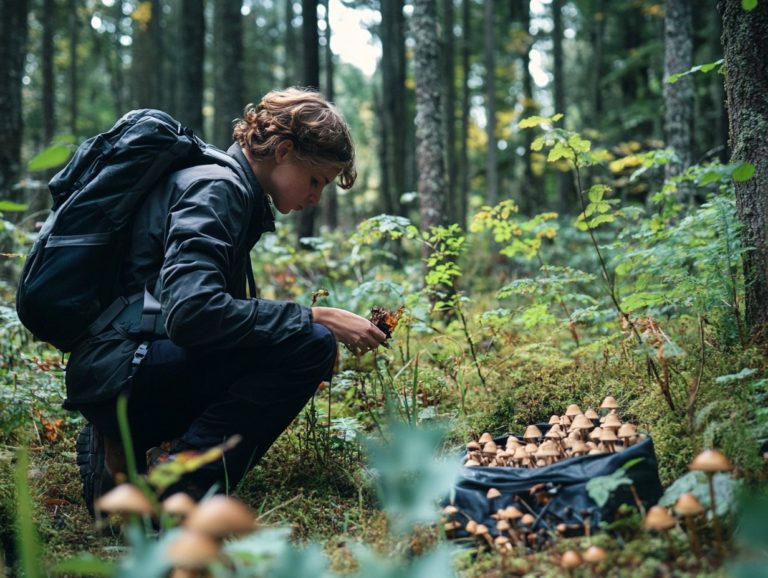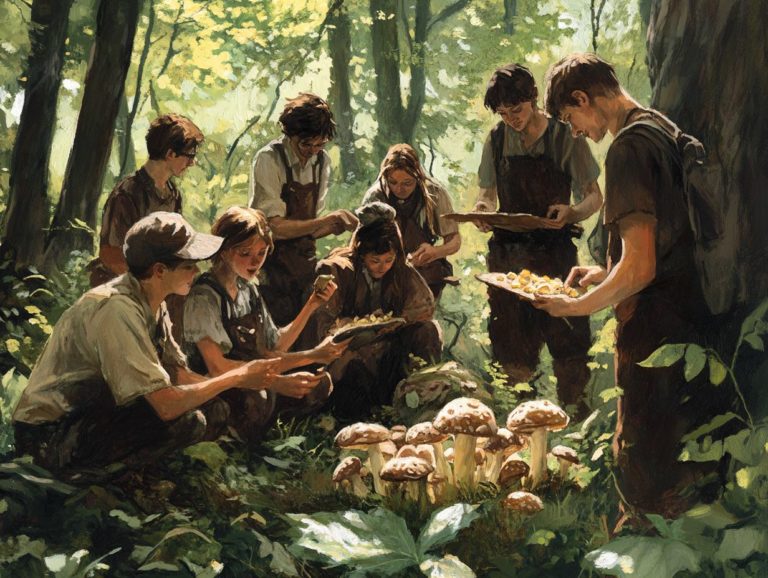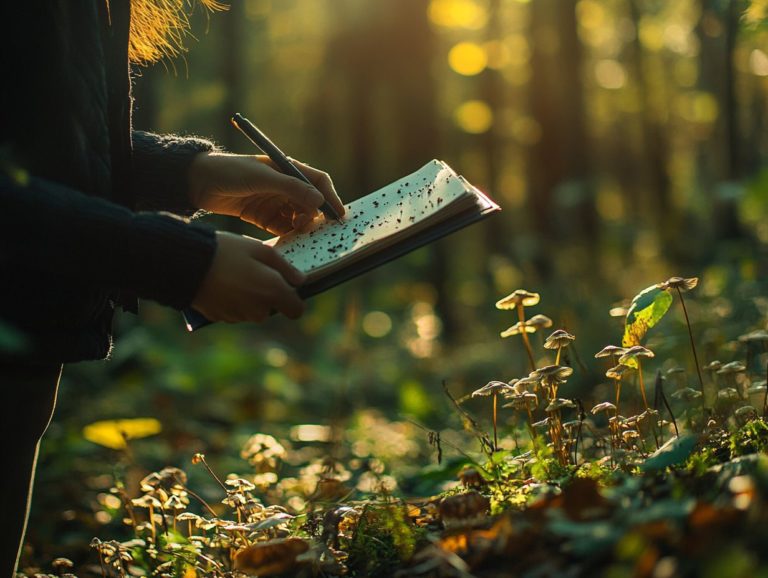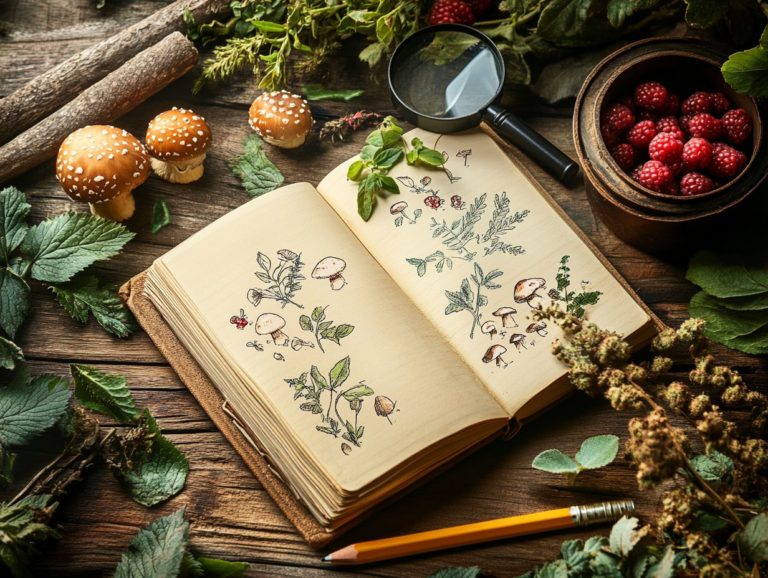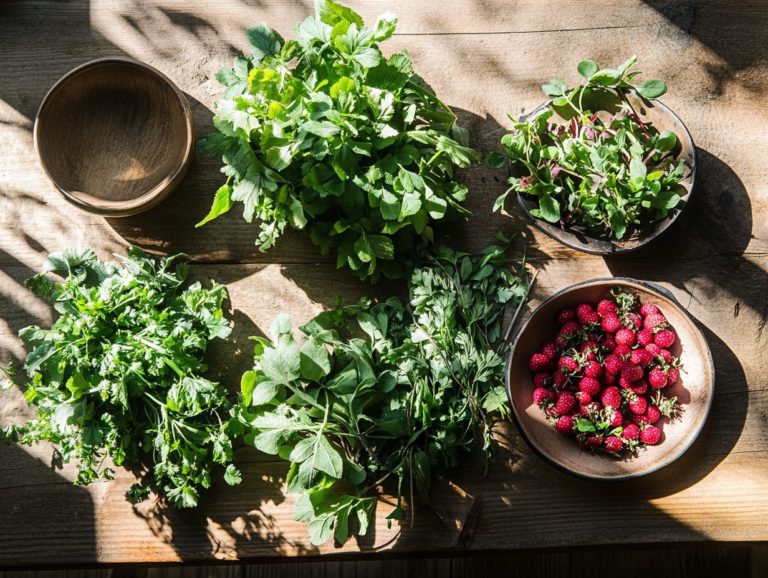Can I Forage in Urban Areas?
Foraging in urban areas is rapidly becoming a trend that bridges the gap between city living and nature, providing you with a distinctive avenue to source wild foods while relishing the great outdoors.
This article delves into the many benefits of urban foraging, highlighting everything from nutritional boosts to economic perks. Be aware of potential risks such as contamination and legal considerations.
You ll learn how to recognize common edible plants and sustainable ecosystems. You ll also receive essential safety tips to ensure your foraging experience is both rewarding and secure.
Dive into the exciting world of urban foraging and discover the treasures your city has to offer, including food sovereignty and food justice!
Contents
Key Takeaways:
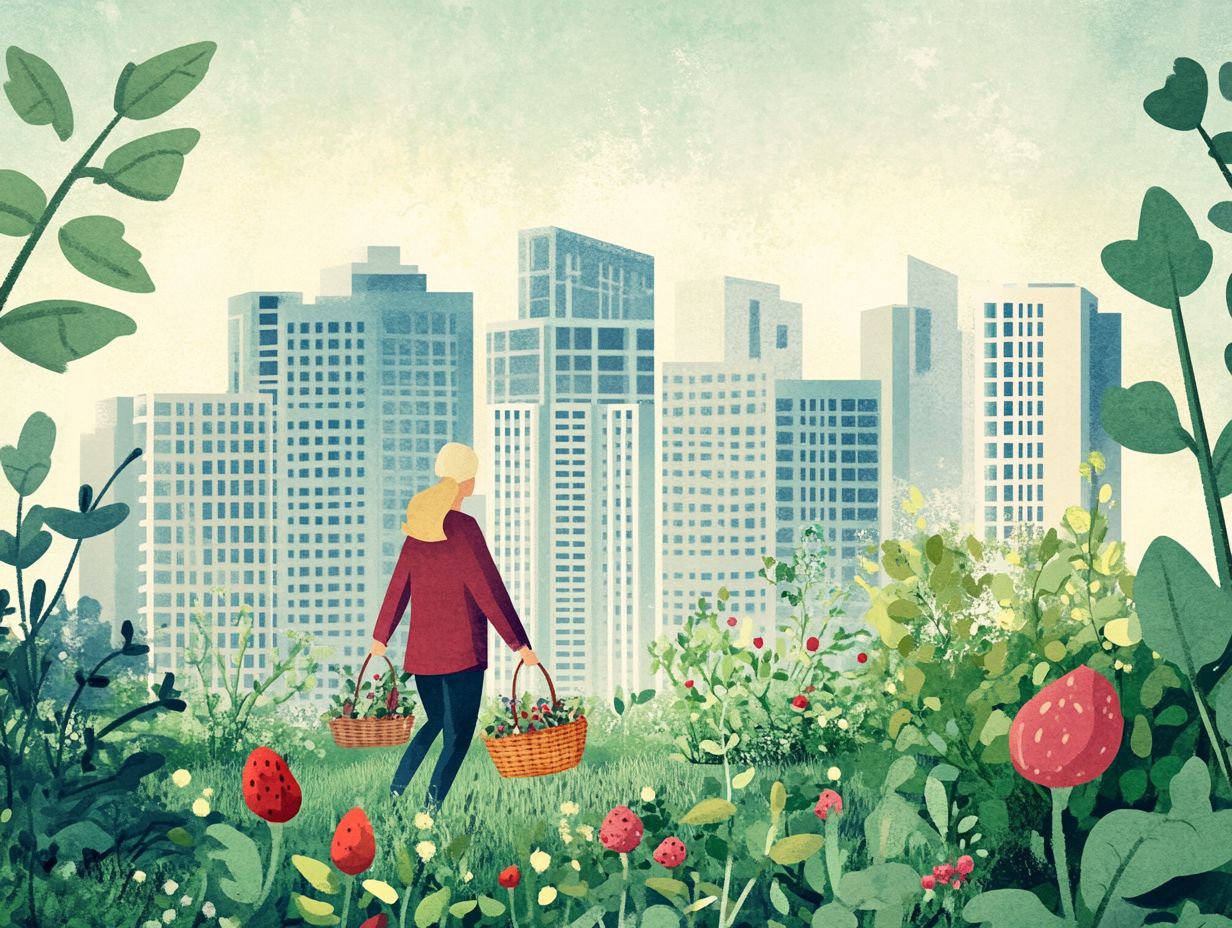
- Foraging in urban areas has numerous benefits, including access to nutritious and cost-effective food options.
- Be aware of potential risks, such as contamination and legal concerns. It’s important to research and identify edible plants before foraging in urban areas, including the impact of environmental land use.
- Follow safety precautions when foraging in urban areas, such as wearing protective gear and avoiding heavily polluted areas.
What is Foraging?
Foraging is the art of seeking out and gathering wild foods think edible plants, mushrooms, and other goodies hiding in plain sight, especially in urban settings where the local flora often goes unnoticed. This sustainable method of sourcing food not only champions food justice and sovereignty. It also nurtures a deeper bond between you and your natural surroundings.
With urban foraging gaining traction, you have the opportunity to uncover and make use of common renewable species. This enhances your diet and raises awareness about the many benefits of wild foods.
Understanding the local flora is essential for successful foraging; it enables you to differentiate between what s delicious and what could potentially lead to a not-so-pleasant experience. Community gardens play a crucial role here, serving as dynamic spaces for education and foraging classes to promote awareness among urban foragers. They encourage you to learn about, cultivate, and experiment with wild edibles like dandelions, nettles, and wild garlic.
The cultural significance of foraging runs deep, passed down through generations and often celebrated in stories and community gatherings, which strengthen the bonds among participants. By embracing foraging practices, you support local biodiversity, enhance ecological awareness, and become a steward of your environment, ensuring that these valuable natural resources are preserved for future generations.
Benefits of Foraging in Urban Areas
Urban foraging presents you with a wealth of benefits, enhancing food justice and food sovereignty while promoting the sustainability of ecosystems and addressing the concerns of food insecurity. If you’re interested in exploring this practice further, consider checking out resources that can help you with foraging. It enables communities by providing access to nutritious wild foods that can significantly alleviate food insecurity.
As cities grow and environmental land use becomes increasingly critical, foraging allows you to reconnect with nature and your local environment. However, it’s important to understand the legalities of foraging to ensure a responsible experience. Along the way, you’ll deepen your understanding of nutritional needs through the discovery and consumption of forageable plants and mushrooms.
Join the urban foraging movement today your city is full of delicious surprises waiting for you!
Nutritional and Economic Benefits
The nutritional and economic benefits of foraging in urban areas are impressive, especially as foraging apps and tools like iNaturalist gain popularity. If you’re curious about this practice, you might wonder how you can learn more about foraging. Wild foods, such as dandelion fritters and various edible plants, provide rich sources of vitamins and minerals that can significantly enhance your dietary diversity and overall health.
By diving into urban foraging, you can cut down on grocery costs while gaining access to fresh, organic ingredients that promote fair access to food.
These foraged treasures, including nutrient-dense greens like nettles and purslane, not only deliver essential nutrients but also contribute to a more sustainable lifestyle. Imagine incorporating dandelions into your salads or whipping up a savory nettle soup. It s a delightful way to spark creative culinary adventures while maximizing health benefits!
Foraging can play a crucial role in reducing food insecurity, especially in low-income communities. You gain the ability to harvest nourishing, seasonal produce without the increasing burden of grocery prices. By embracing local flora, you can discover economical alternatives to store-bought items while fostering a sense of community and self-sufficiency while promoting environmental conservation.
Potential Risks of Foraging in Urban Areas
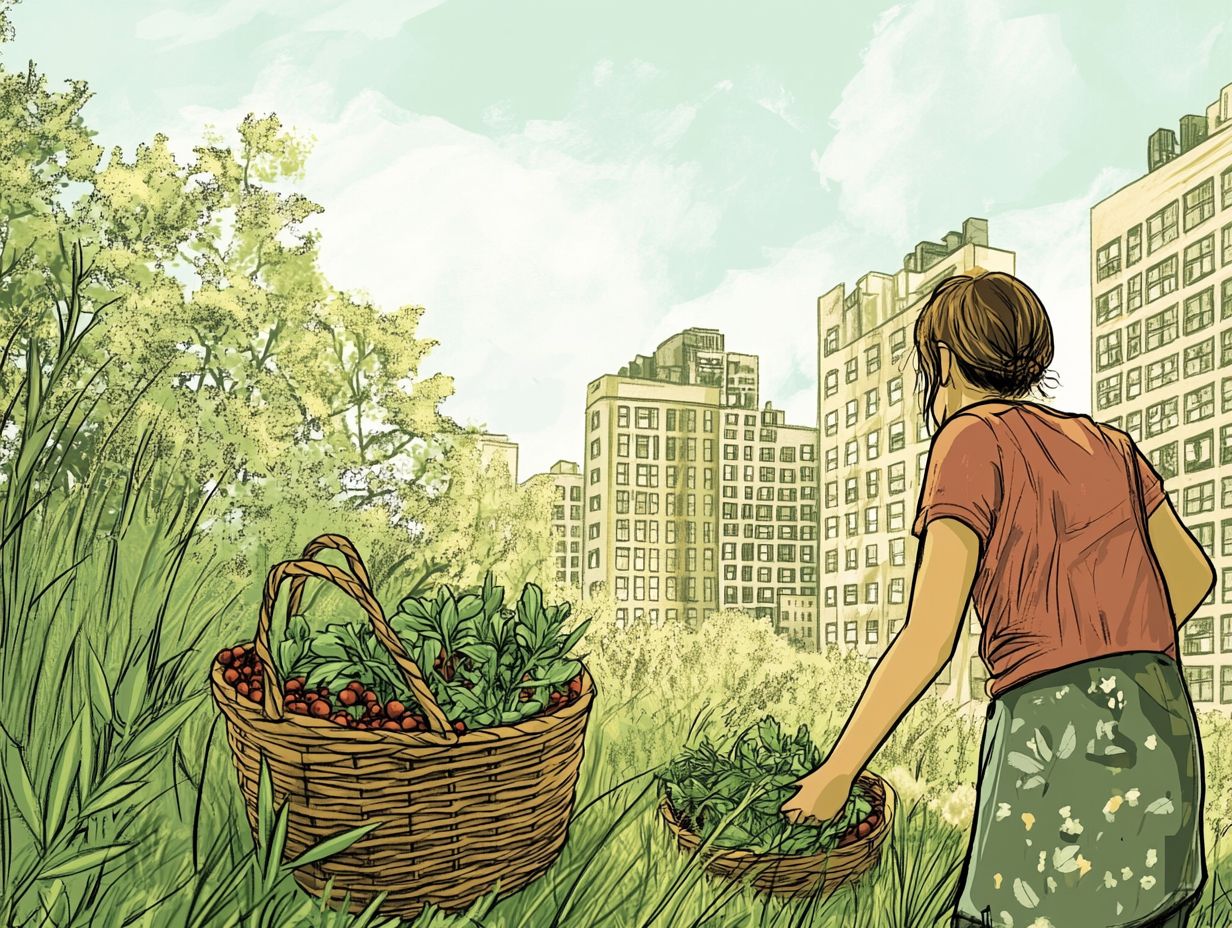
Urban foraging offers many benefits, but it’s vital to stay vigilant about potential risks. Familiarizing yourself with finding local edibles in urban settings can help you navigate contaminants like glyphosate and heavy metals, as well as legal considerations regarding where you can forage.
Urban settings often conceal hidden dangers that could jeopardize your food safety. If you’re not careful about identifying edible plants in urban areas, you could unintentionally risk food insecurity! This highlights the need for knowledge and caution in the art of foraging.
Contamination and Legal Considerations
Contamination presents a serious risk in urban foraging. The delightful forageable plants you seek might absorb harmful substances like heavy metals and glyphosate from polluted soil and air. This can lead to significant health concerns that you definitely want to avoid.
It’s crucial to understand the legal considerations in urban environments. Different jurisdictions may impose restrictions on foraging in public spaces, making it important to be aware of local laws and community guidelines, especially when exploring foraging in urban environments: seasonal edibles.
Urban areas are often plagued by emissions from vehicles, industrial sites, and improper waste disposal, contributing to a toxic atmosphere. Pollutants such as lead, cadmium, and polycyclic aromatic hydrocarbons can seep into the food chain, endangering not just foragers like you but also the general public.
Legal limitations can vary widely; some cities might completely ban foraging, while others allow it under specific conditions, such as obtaining permits or steering clear of certain properties. If you’re interested in getting started, it’s important to learn how to get started with foraging and remain vigilant about your surroundings, being well-informed about property boundaries and local regulations, which may also be affected by trends on social media platforms like BlackForager and Wildman Steve Brill.
This knowledge will help you avoid both legal repercussions and health hazards associated with contaminated plants.
Discovering Edible Plants Near You!
Identifying edible plants in urban areas is an essential skill for you as a forager. It enables you to distinguish safe, nutritious wild foods from potentially harmful species, deepening your connection to the local flora.
By participating in foraging classes and using resources like foraging apps and guides, you can sharpen your mushroom identification skills and expand your understanding of the edible plants that thrive in your environment. Start your foraging journey today!
Common Edible Plants and How to Identify Them
Common edible plants thriving in urban areas include dandelions, clover, and wild garlic. Each plant has distinctive traits identifiable through its leaves, flowers, and growth habits.
Engaging in gathering wild foods classes or consulting mushroom identification guides can greatly enhance your experience and ensure you harvest wild foods safely.
Take dandelions, for example; they are a versatile plant worth exploring. You ll spot them by their jagged green leaves and vibrant yellow flowers, often gracing lawns and garden beds.
Dandelions make a nutritious addition to salads or teas. Clover is another gem, easily recognized by its trifoliate leaves and sweet-scented white or pink blossoms.
This delightful plant has a flavor perfect for sweetening beverages. Then there s wild garlic, known for its mild onion-like aroma and broad green leaves, thriving in shaded spots.
Wild garlic is ready to elevate your dishes with its unique taste. When you re out harvesting, always ensure you re foraging in pesticide-free zones and give your gathered goods a good wash.
Dive into resources like local herbal clubs or online foraging communities, which can offer invaluable insights and guidance, whether you re just starting or have some experience.
Foraging Safety Tips
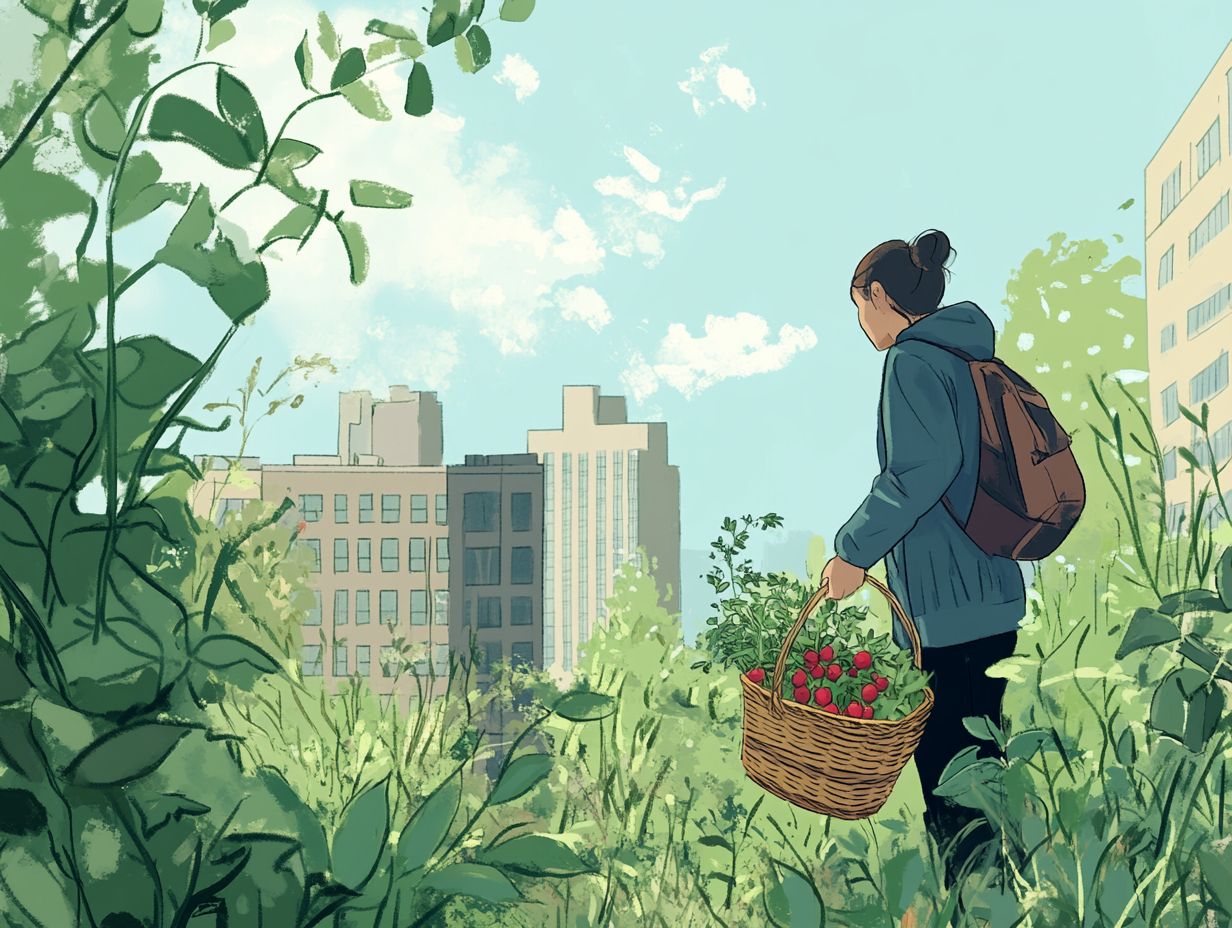
To ensure a safe and enjoyable experience, it s essential to adhere to key safety tips. This includes properly identifying common renewable species, being aware of environmental contaminants, and respecting local laws.
By following these guidelines, you can mitigate the risks associated with food insecurity and contamination, all while reveling in the many benefits of urban foraging.
Precautions to Take When Foraging in Urban Areas
When foraging in urban areas, you should take several precautions. Avoid locations near highways or industrial sites where contamination is a real concern, as pollutants can jeopardize food safety. Familiarizing yourself with foraging techniques for urban environments can also enhance your experience and ensure safer practices.
Familiarizing yourself with local edible plants and their lookalikes is essential for safe harvesting. These measures promote your food sovereignty and help mitigate the risks associated with urban foraging.
Navigating this complex landscape requires you to educate yourself about the diverse local flora. Many edible plants have poisonous counterparts that can easily be mistaken for their safe relatives.
Understanding how pollution affects different plant species will guide you in selecting safe foraging locations. Recognizing the importance of sustainable harvesting practices is equally vital only taking what you need helps to foster a thriving ecosystem.
By enlightening yourself and sharing insights within your community, you can contribute to a network of responsible and informed individuals, ensuring that urban foraging remains safe, sustainable, and beneficial for everyone involved.
Consider joining gathering wild foods classes or following experts on social media platforms like Instagram and TikTok.
Frequently Asked Questions
Can I Forage in Urban Areas?
Yes! You can forage in urban areas, but there are certain things to keep in mind before doing so.
What is foraging?
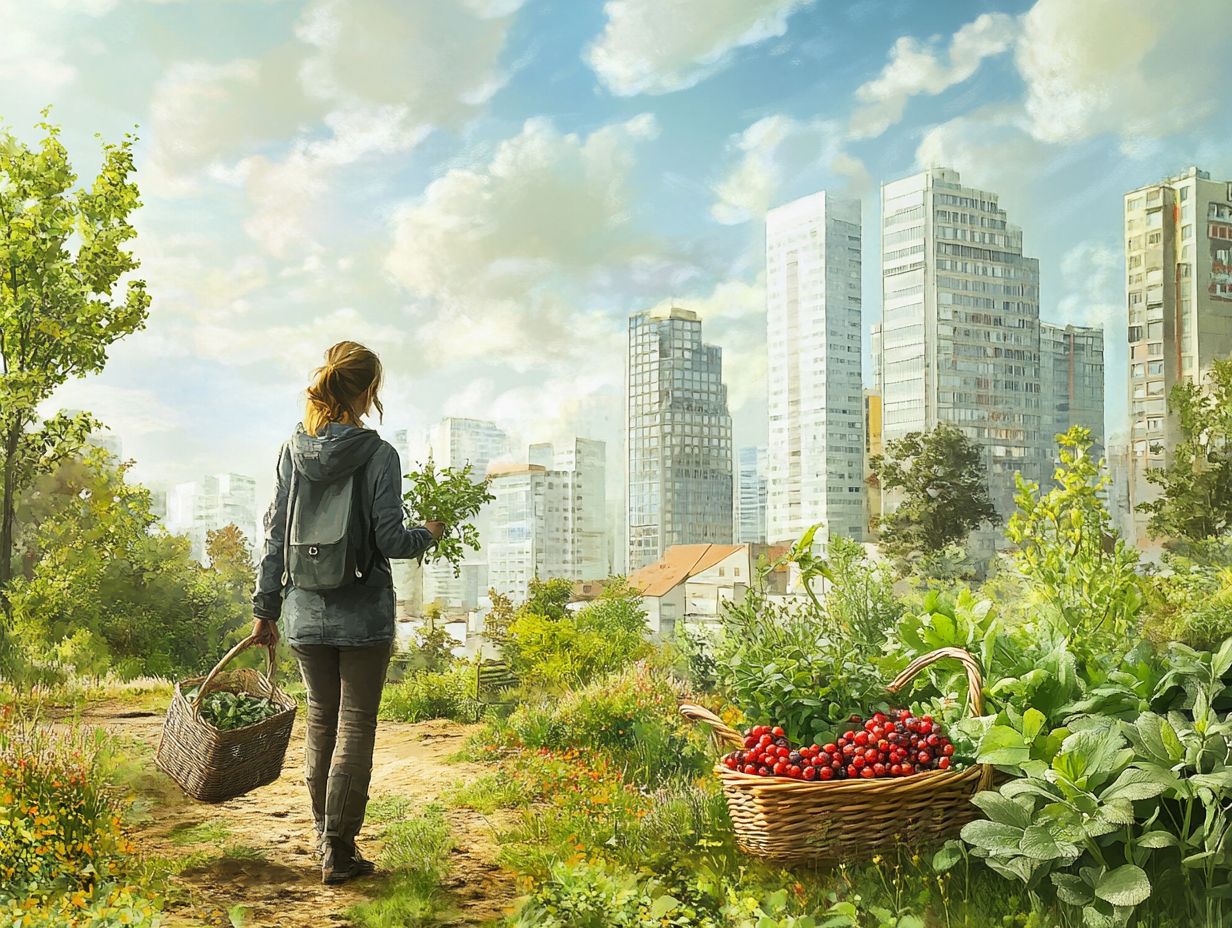
Foraging refers to the act of searching for and gathering food from natural sources, such as plants and fungi.
What delicious finds await me in urban foraging?
The type of plants and fungi available for gathering will vary depending on the location, but common options include dandelions, berries, and edible mushrooms.
Is it safe to forage in urban areas?
Be smart and stay safe while you explore urban foraging! There could be potential hazards such as pollution, pesticides, or toxic plants.
Always research the area and properly identify any plants before consuming them.
Are there any regulations for foraging in urban areas?
Some cities may have regulations in place regarding foraging. It s important to check with local authorities before gathering.
In some cases, a permit may be required.
Are there any tips for collecting plants in urban areas?
Discover the hidden gems of your city! Foraging is best in areas away from heavy traffic and pollution.
Steer clear of plants near roads or those that may have been sprayed with chemicals.
Respect private property and always ask for permission to collect.

